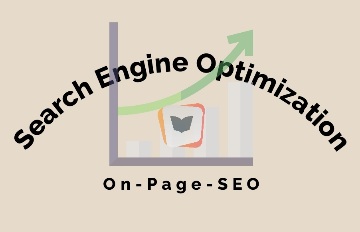Are you ready to make your web page the talk of the town in Google search results? It’s time to optimize your on-page SEO, my friend! But what does that even mean? Let’s break it down. Essentially, Google scans your page to see if it’s relevant to the search terms you want to rank for. And the key to success? Make sure your content is on point and packs a punch.
Step 1: Yoast Your Way to SEO Success 
If you have a WordPress site, the Yoast plugin is your new best friend. It makes optimizing your on-page SEO a breeze, helping you easily set up your page and create killer title and description tags. Don’t have WordPress? No problem! Other platforms like Shopify have built-in SEO features that make your life a whole lot easier.
Step 2: The Power of the Perfect Title Tag 
Your title tag is like a billboard for your page. Use your main keyword in it to tell Google and searchers exactly what your page is about. Do your research and pick the best keyword for the job. And speaking of jobs, this one’s easy peasy.
Step 3: Meta-Morphosis: The Art of Crafting the Perfect Meta Description 
While it may not be a major factor in Google’s algorithm, your meta description is still important. It’s your chance to entice searchers to click through and learn more. Make your description short, sweet, and packed with relevant keywords. And remember, Google highlights your main keyword in bold, so don’t be afraid to use it.
Step 4: Body Copy, Baby! Put Your Keyword to Work 
Include your main keyword in your body copy (the main content of your page) to give Google a good understanding of what your page is about. Make sure it’s in the first 150 words and sprinkled throughout the rest of your content. But don’t go overboard! Too much of a good thing can hurt your search engine rankings and even get you ignored by Google. As a general rule, aim to use your main keyword 3-4 times in a 1500-word piece of content, plus once in the title and meta description.
Step 5: Keyword Relationships: The More, the Merrier 
In addition to your main keyword, use related keywords in your content to maximize your search potential. You can find related keywords using Google’s keyword planner or by checking Google Search suggest. For example, if you’re writing about influencer outreach, check what related terms people are searching for and include those in your content, meta description, and sub headers.
Step 6: Picture Perfect: Optimizing Your Image SEO 
Visual content is great, but it can be tough for Google to figure out what your site is all about. Help it out by optimizing your image SEO. Make sure your image file name is descriptive and relevant, include image alt text that matches the image, and ensure your image title is accurate and relevant. It’s like putting your best foot forward for Google, and that’s always a good idea.
Step 7: User Experience: The Final Frontier 
You’ve optimized your on-page SEO, but don’t forget about the user experience! It may be hard for search engines to assess, but it still affects your SEO score. If your site is hard to navigate, cluttered, or just plain boring, people won’t stick around long enough to engage. Make sure your site is user-friendly and enjoyable to explore.
Conclusion
In conclusion, On-Page SEO is a crucial aspect of optimizing your website for search engines. Make sure to use the right keywords, optimize your images, and enhance the user experience to improve your search engine rankings. And remember, a little bit of humor never hurts!


Comments